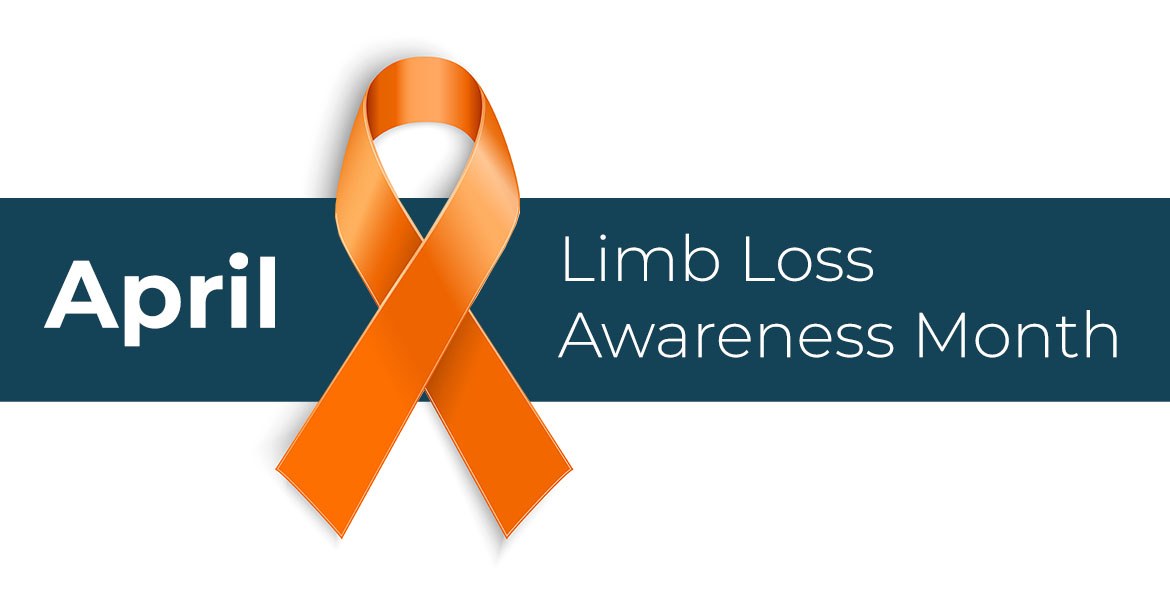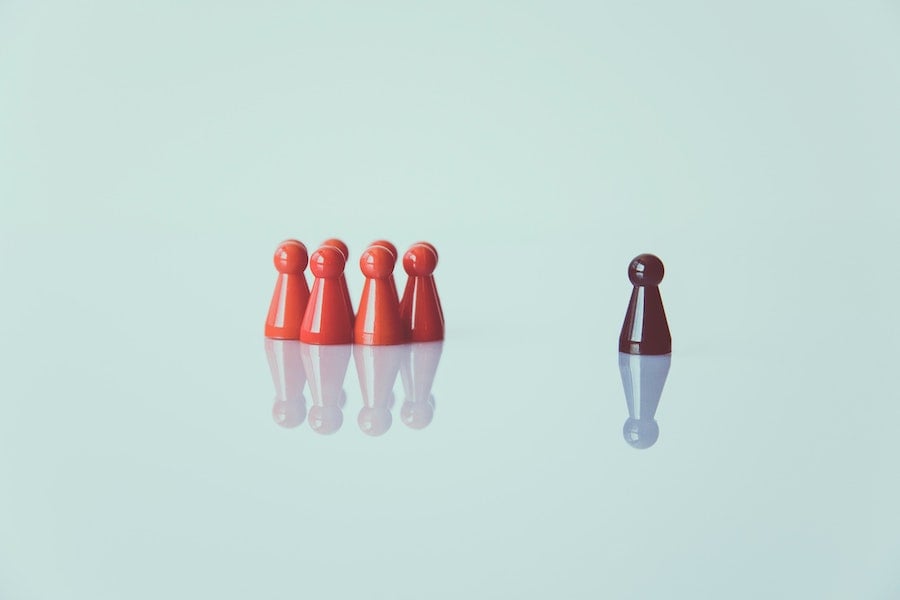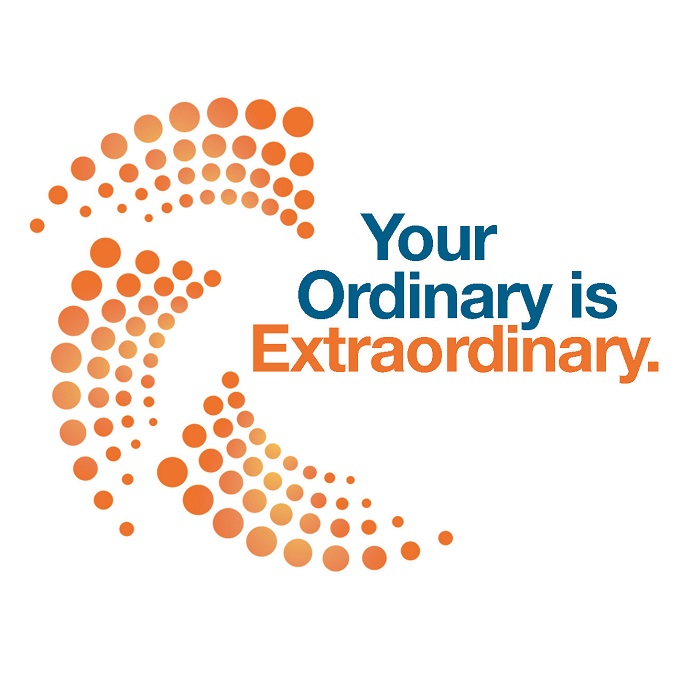Limb loss awareness month is recognized annually to draw attention to the impact of limb loss and its effect on individuals’ lives. This month-long campaign aims to spread awareness of the difficulties that amputees face on a daily basis and celebrate their strength in overcoming adversity. Limb loss is a life-changing event that affects millions of people worldwide, making it essential to educate and inform individuals about the importance of amputee rehabilitation, recovery, and support. In this blog post, we will explore the significance of limb loss awareness month and discuss how we can all play a role in supporting amputees in our community.

1. Limb Loss: Causes and Prevalence
Limb loss is a condition that affects millions of people across the world, with various causes and prevalence. In the first section of the blog, the focus is on exploring the causes and prevalence of limb loss. It can occur due to a wide range of reasons such as trauma, diabetes, cancer, vascular disease, and congenital disabilities. The prevalence of limb loss varies across different populations based on age, gender, and geographical location. This information is crucial for improving early detection and treatment of limb loss. The blog will shed more light on the emotional and physical challenges faced by patients, assistive technologies available, and innovations in limb replacement and prosthetics. Additionally, the blog also emphasizes the importance of physical rehabilitation, preventing limb loss through healthy living, disability rights, and advocacy for the needs of limb loss patients and caregivers.

2. Improving Early Detection and Treatment
In the previous section, we discussed the causes and prevalence of limb loss. It is important to note that early detection and treatment can be crucial in preventing the loss of limbs. Improving access to quality healthcare and increasing awareness of the signs and symptoms of underlying conditions, such as diabetes and peripheral artery disease, can lead to earlier diagnosis and better treatment options. Additionally, advancements in medical technology, including imaging and surgical techniques, have allowed for more effective and less invasive interventions for limb-saving procedures. By promoting early detection and prompt treatment, we can help reduce the number of amputations and improve outcomes for individuals living with limb loss.

3. Coping with the Physical and Emotional Challenges
Coping with the physical and emotional challenges of limb loss can be overwhelming, but it is crucial to one’s healing process. Early detection and treatment, assistive technology, physical rehabilitation, and healthy living can all contribute to a smoother recovery. However, it is important to acknowledge the emotional toll that limb loss can have on an individual. Patients may experience depression and anxiety, and require education and emotional support. It has been shown that hearing from those who have successfully moved forward after amputation can be effective in aiding patients’ mental health. Additionally, support groups, practical help with daily tasks, and advocacy for their needs and rights can all aid in the recovery process. Innovations in limb replacement and prosthetics can offer new possibilities for patients, but it is important to address the physical and emotional challenges they face along the way. With education and support, limb loss patients can learn to adapt and thrive, even with limb difference.

4. Assistive Technology for Limb Loss Patients
Assistive technology can greatly improve the quality of life for those living with limb loss. From prosthetics to mobility aids, these devices can help individuals with limb loss to regain their independence and mobility. The Amputee Coalition encourages those living with limb loss to explore the many options available to them. Different types of prosthetics and braces can be custom-fit to the individual for maximum effectiveness, and advancements in technology have made these devices more intuitive and responsive. Physical therapy and rehabilitation can also play a crucial role in helping patients learn how to use assistive devices and regain strength and mobility. With the right assistive technology and support, individuals with limb loss can overcome physical challenges and live full and fulfilling lives.

5. The Importance of Physical Rehabilitation
Physical rehabilitation is crucial for individuals who have experienced limb loss. It not only helps them regain strength, flexibility, and mobility but also aids in adjusting to new prosthetic devices. In conjunction with coping with the physical and emotional challenges, assistive technology for limb loss patients, and preventing limb loss through healthy living, physical rehabilitation is a vital aspect of recovery. Peer group support is also vital in encouraging individuals to stay motivated and engaged in their rehabilitation process. Continuing education is also significant in providing the most advanced and up-to-date care for limb loss patients. Innovations in limb replacement and prosthetics continue to advance, providing even more options for patients to restore function and improve their quality of life.

6. Preventing Limb Loss through Healthy Living
The importance of healthy living in preventing limb loss cannot be overstated. Exercise is a crucial element in reducing the risk of developing diabetes and cardiovascular disease, which are major contributors to amputations. Along with regular physical activity, a balanced diet and regular medical check-ups can help individuals maintain good health and prevent the need for limb loss. Prevention efforts are also important for individuals who are at higher risk due to chronic wounds or other medical conditions. By adopting and maintaining healthy lifestyle habits, individuals can help reduce the incidence of limb loss and improve their overall health and well-being.

7. Disability Rights and Advocacy
It is crucial to address the issue of disability rights and advocacy in the context of limb loss. People with limb loss often face discrimination and lack of access to necessary accommodations and resources. This is why it is important to advocate for their needs and rights, as well as to raise awareness about the challenges they face. It is also crucial to ensure that they have equal opportunities for education, employment, and participation in society. By supporting disability rights and advocacy, we can help create a more inclusive and equitable world for all individuals, including those with limb loss. This is why it is critical to continue promoting awareness and action on this important issue.

8. Addressing Comorbidities and Complications
Addressing comorbidities and complications is an important aspect of limb loss management. Medical conditions such as heart failure, chronic renal disease, and hypertension can increase the risk of complications and readmissions. Early detection and proper management of these comorbidities can improve the long-term health of limb loss patients. It is also important to address post-operative complications, such as stump oedema, to prevent further health issues. Injuries leading to limb loss can often result in comorbidity and complications, which can lengthen treatment duration and increase costs. Practitioners and caregivers must work together to address and manage these issues effectively. By providing comprehensive care that addresses both physical and emotional challenges, patients can achieve a better quality of life. Additionally, innovations in prosthetics and limb replacement provide new solutions for patients with limb loss, allowing for greater mobility and independence. By addressing comorbidities and complications, limb loss patients can take control of their health and improve their overall well-being.

9. Supporting Limb Loss Patients and Caregivers
Supporting limb loss patients and their caregivers is crucial to help them navigate the physical and emotional challenges that come with limb loss. It’s essential to offer emotional support and understanding, listen to their concerns, and be there for them as they navigate this difficult journey. Providing practical help with daily tasks such as grocery shopping, meal preparation, and transportation can also alleviate some of the stress that comes with adjusting to a new way of life. Connecting them with support groups and resources, such as peer support groups and rehabilitation programs, can also be helpful. Advocating for their needs and rights can also make a significant difference in their lives, ensuring they have access to the necessary healthcare and assistive devices. The advancements in limb replacement, prosthetics, and assistive technology have made it easier for those living with limb loss to live full, productive lives, and understanding these innovations can help patients and caregivers make informed decisions about their care. By offering support and compassion, we can help limb loss patients and caregivers overcome the unique challenges they face and empower them to live their lives to the fullest.

Ways to support limb loss patients and caregivers
Limb loss can be a challenging experience for both patients and caregivers, and it’s important to offer support both emotionally and practically. One way to provide emotional support is to simply be understanding and empathetic towards their struggles. Offering a listening ear and a shoulder to lean on can make a significant difference in their recovery journey. Practical help with daily tasks can also alleviate some of the burdens that come with limb loss. Whether it’s helping with groceries or transportation, every little bit helps. It’s also essential to connect them with support groups and resources where they can meet others facing similar challenges and learn about available resources. Advocating for their needs and rights is another way to support them, ensuring they have access to appropriate care and assistive technology. As innovations continue in limb replacement and prosthetics, caregivers and patients alike can be encouraged by the possibilities that exist for the future.

Offer emotional support and understanding
Limb loss can have a profound impact on a person’s emotional well-being. It is important for loved ones to offer emotional support and understanding during this difficult time. This can include being a listening ear, showing empathy, and offering words of encouragement. Practical help with daily tasks like cooking, cleaning, and transportation can also alleviate some of the burden that the patient may feel. Connecting the patient and their caregivers with support groups and resources can provide a sense of community and further aid in their emotional recovery. Advocating for their needs and rights is also crucial. By being supportive and understanding, loved ones can help the patient feel seen, heard, and valued, ultimately contributing to their overall well-being.

Provide practical help with daily tasks
After experiencing limb loss, patients may find it challenging to complete daily tasks that they once took for granted. Providing practical help, such as assisting with household chores or running errands, can greatly alleviate their stress and make their recovery process smoother. It also helps caregivers by taking some of the burden off their shoulders. Additionally, learning how to use assistive devices and adaptive equipment can empower patients to complete tasks on their own. Providing these resources and practical assistance is crucial to help patients maintain their independence and overall well-being. It is important to remember that every patient’s needs are unique, so tailor your help to their specific situation. By providing practical help with daily tasks, caregivers and loved ones can make a significant difference in the lives of those recovering from limb loss.

Connect them with support groups and resources
For limb loss patients and their caregivers, one of the most valuable resources is connecting with support groups and accessing available resources. These groups provide a variety of benefits, including emotional support, advice, and practical help with daily tasks. The National Peer Support Group Network and AMPOWER® are two prominent organizations that offer peer-to-peer support and online communities. Additionally, the Amputee Coalition offers valuable resources for amputees, such as local support group directories and educational materials. It’s important to advocate for the needs and rights of limb loss patients and their caregivers, and these support groups and resources provide an important avenue to do so. By fostering understanding, compassion, and support for amputees, everyone can work together to help enrich their lives and empower them to live without limits.

Advocate for their needs and rights
Advocating for the needs and rights of limb loss patients and their caregivers is crucial to improving their quality of life. It involves working to ensure that they have access to necessary medical care, assistive technology, and rehabilitation services. Additionally, advocating for their rights means fighting for equal treatment and opportunities in employment, education, and other aspects of society. By educating themselves on these issues and actively engaging in advocacy efforts, individuals can make a significant impact on the lives of those affected by limb loss. It is also important to recognize the significant emotional toll that limb loss can take on both patients and their caregivers. Advocating for their emotional well-being by providing support and connecting them with resources can go a long way in helping them recover and adjust to their new way of life.

10. Innovations in Limb Replacement and Prosthetics
Innovations in limb replacement and prosthetics have improved significantly in recent years, making it easier for patients with limb loss to adapt to their new way of life. From advanced prosthetic limbs with artificial intelligence to 3D-printed prosthetics customized to fit each individual, the options are vast and continuously improving. Not only are these advancements improving the physical functionality of prosthetics, but they are also making them more comfortable and aesthetically pleasing. With the help of these advancements, patients with limb loss can now lead a more fulfilling life with increased independence and confidence. As always, it is important for patients to work closely with their healthcare team and prosthetist to determine the best option for their specific needs and to continue addressing any physical and emotional challenges that may arise.

